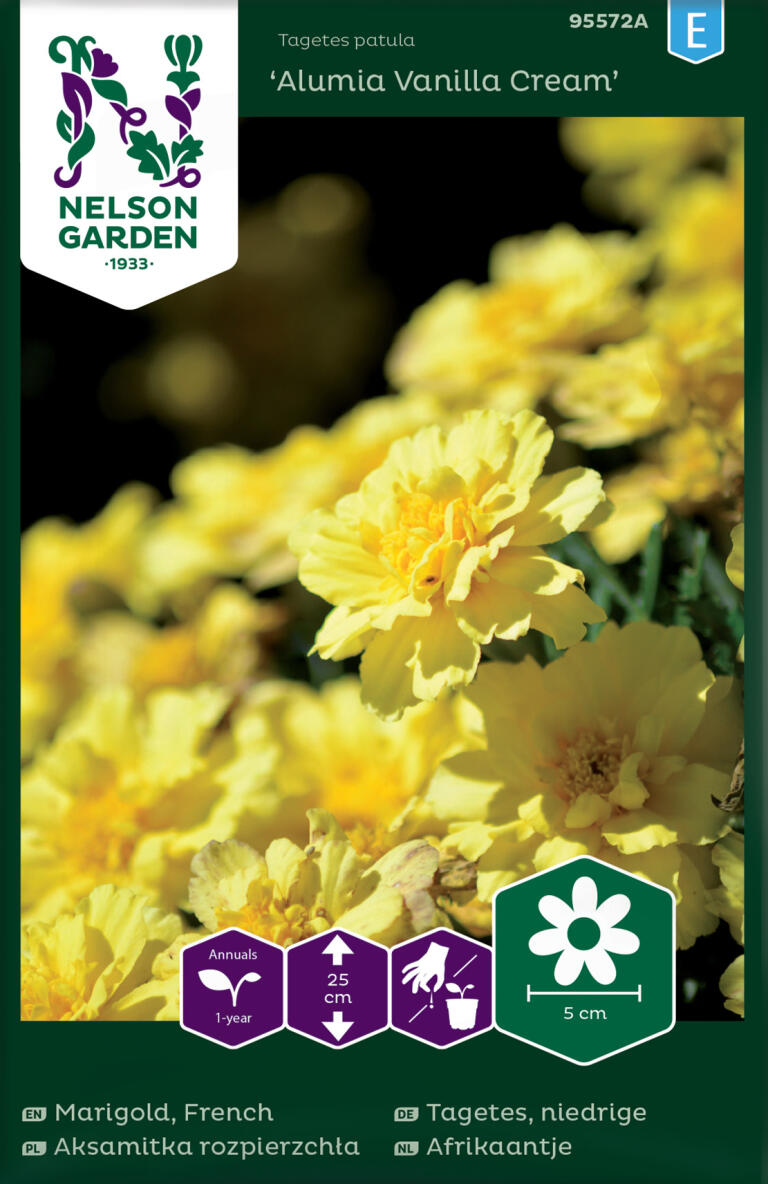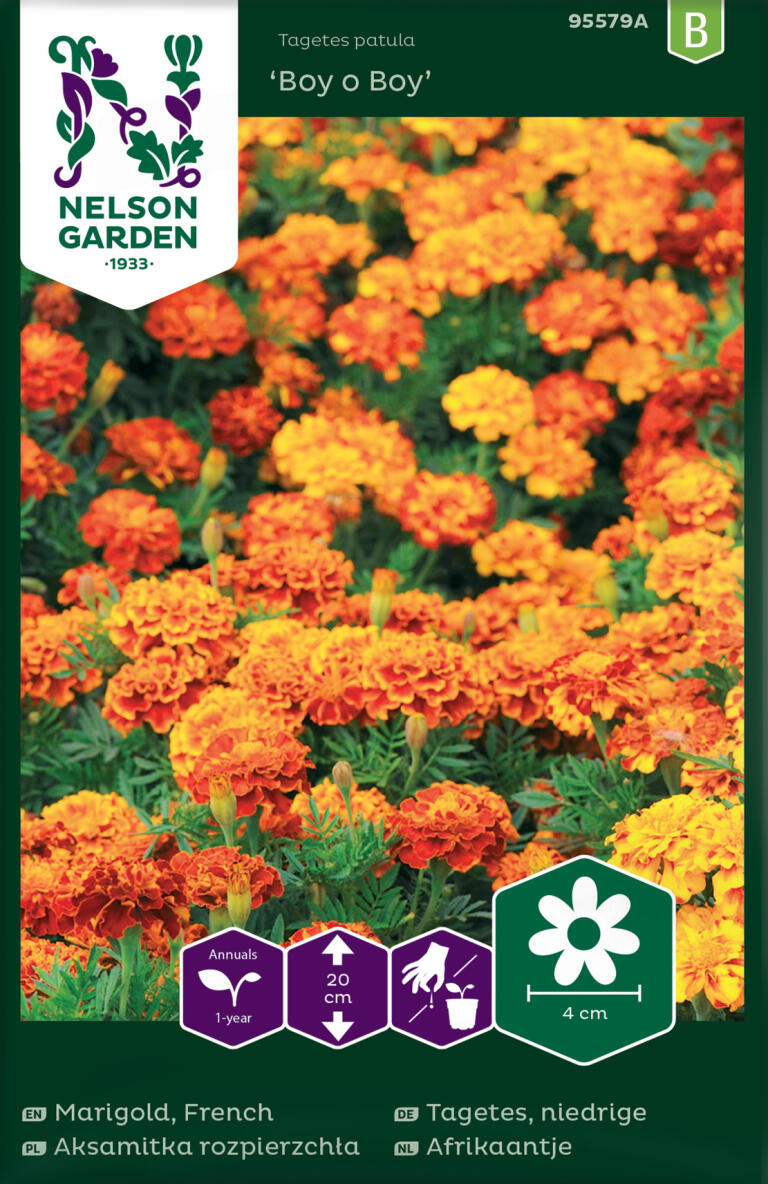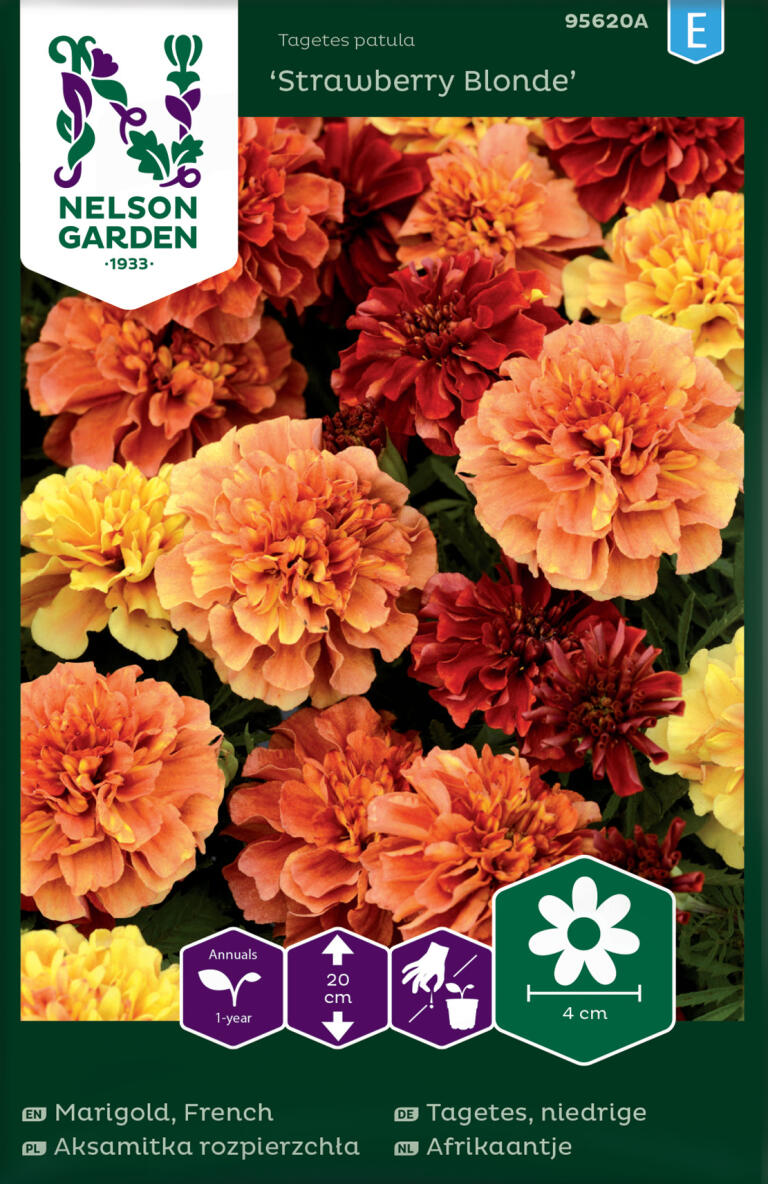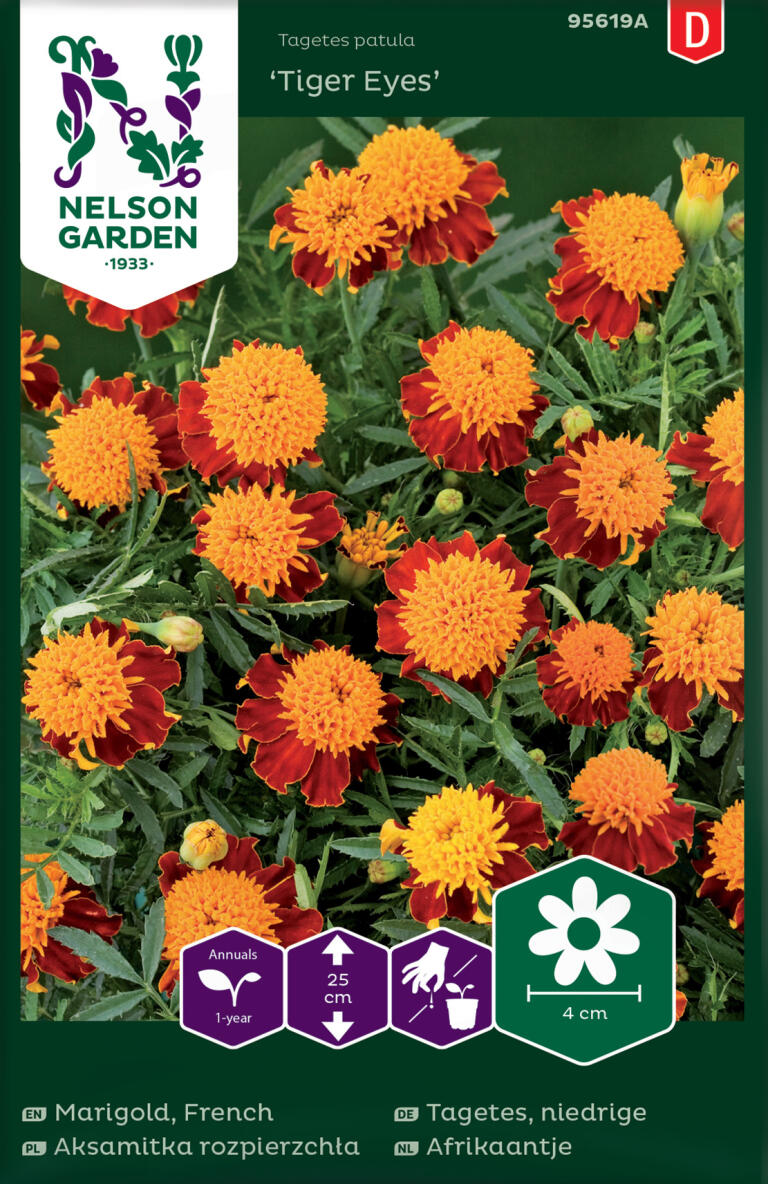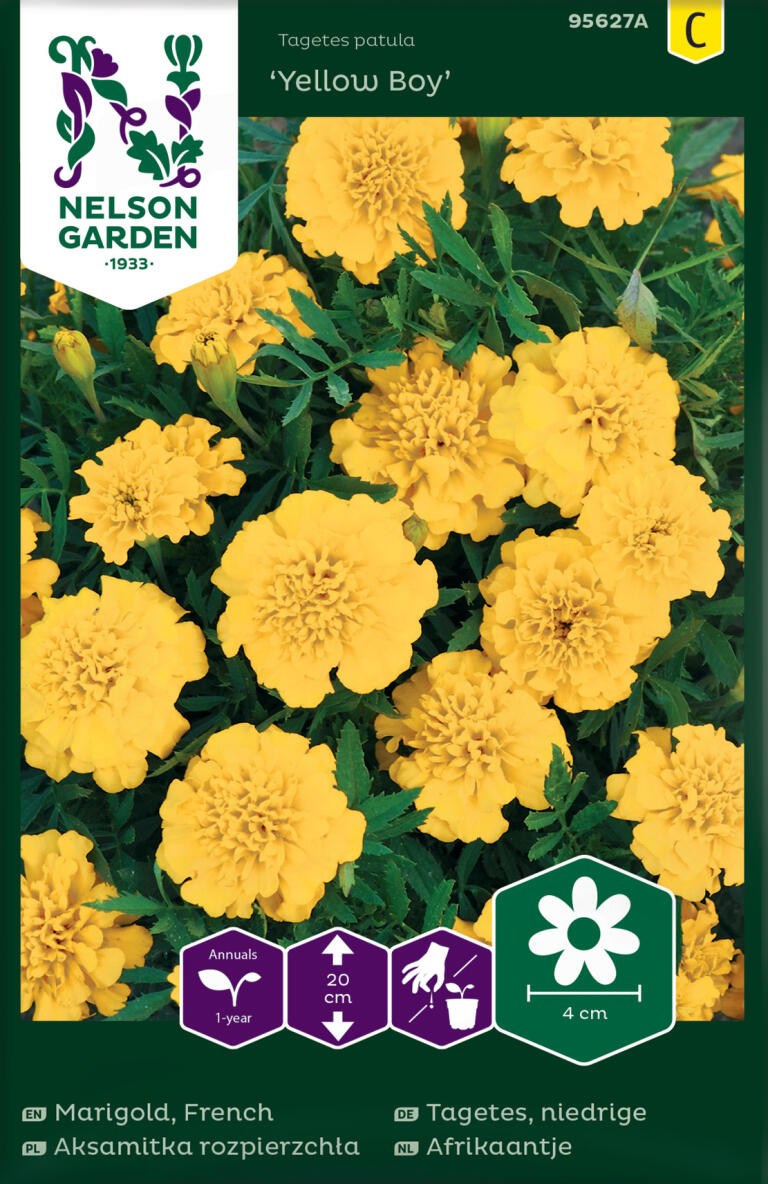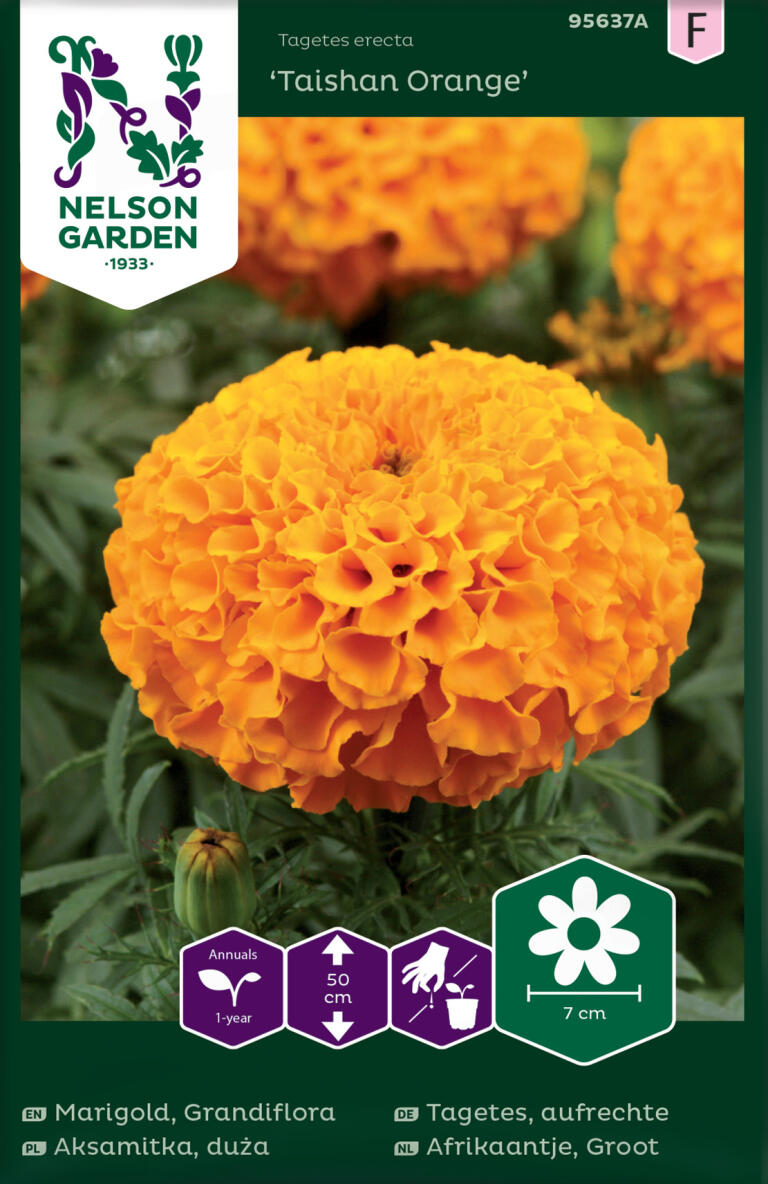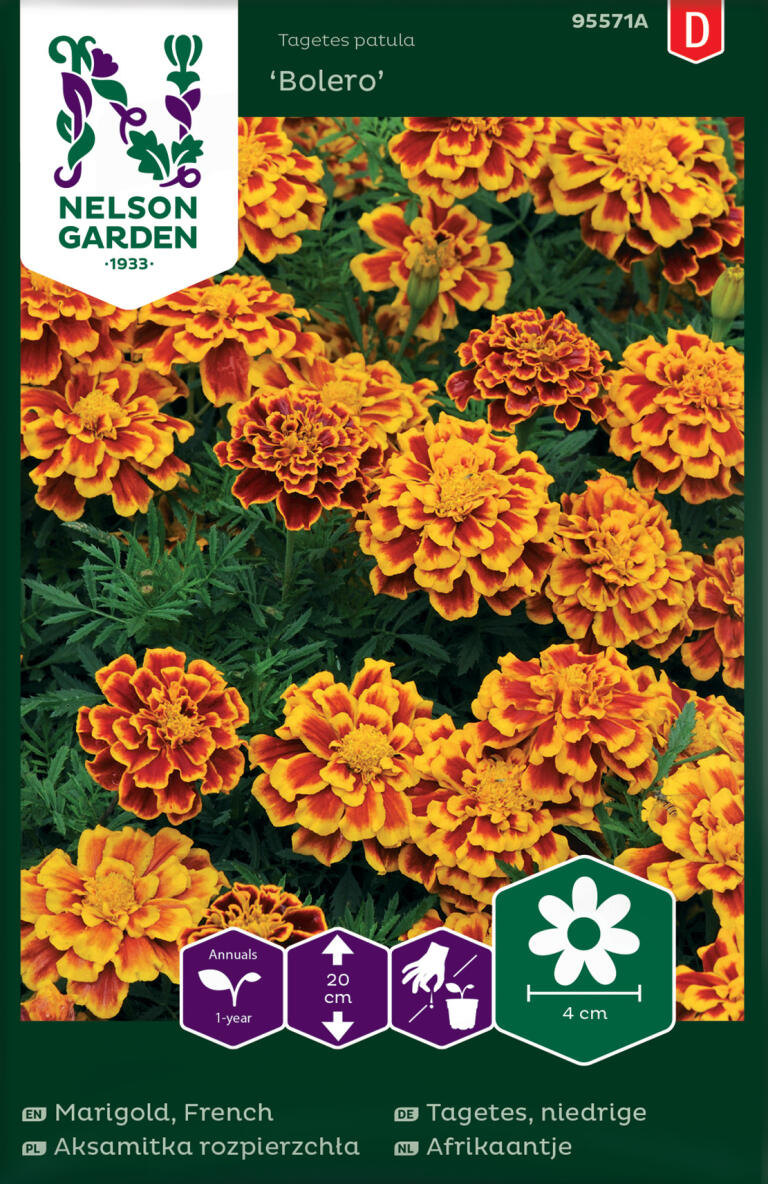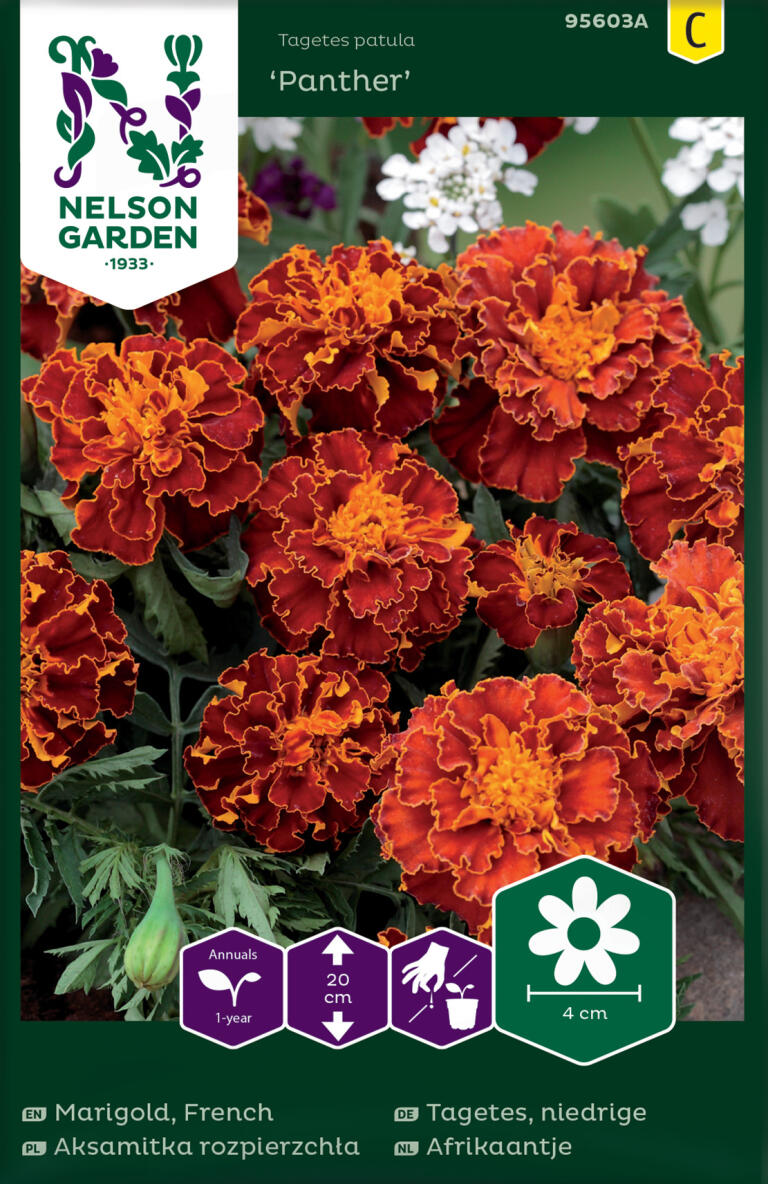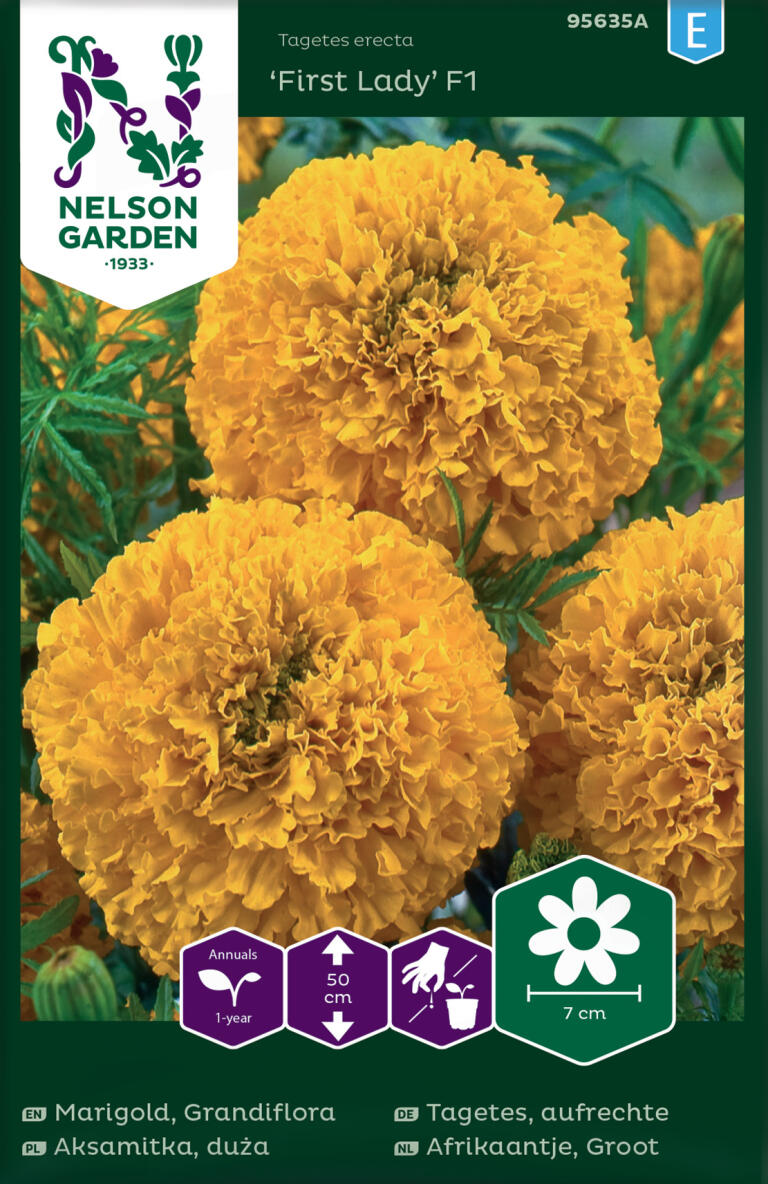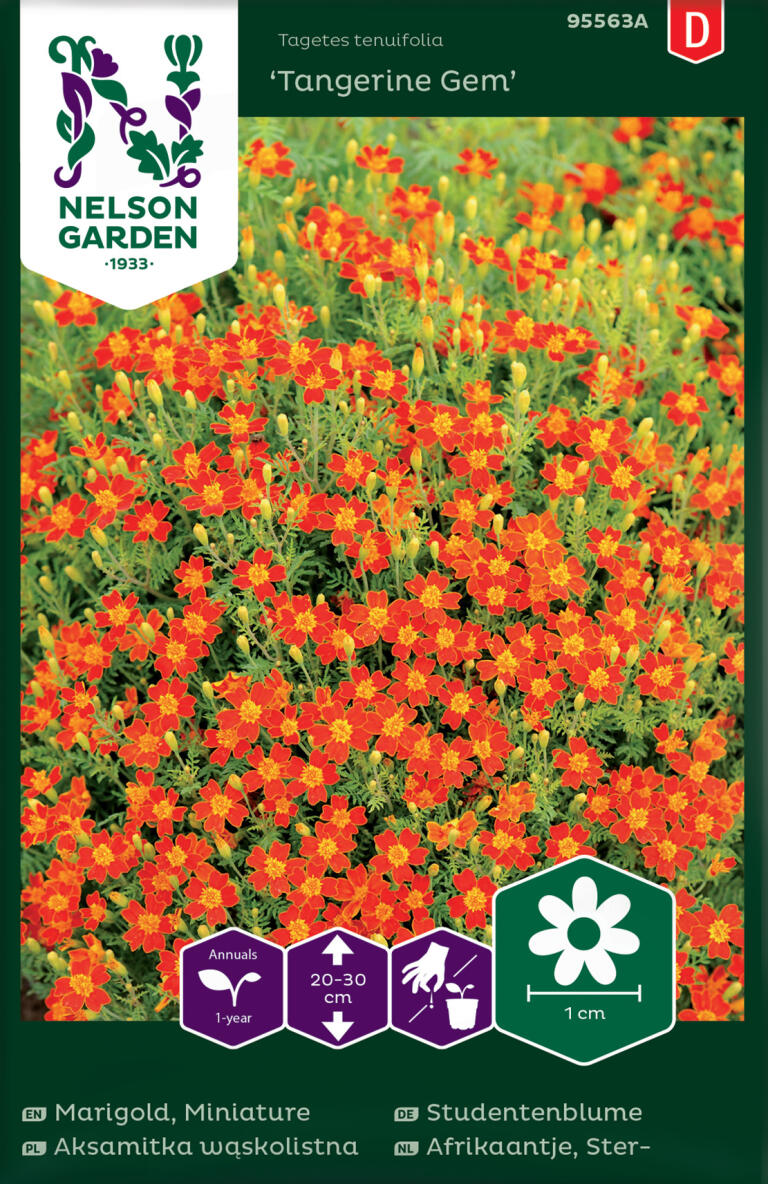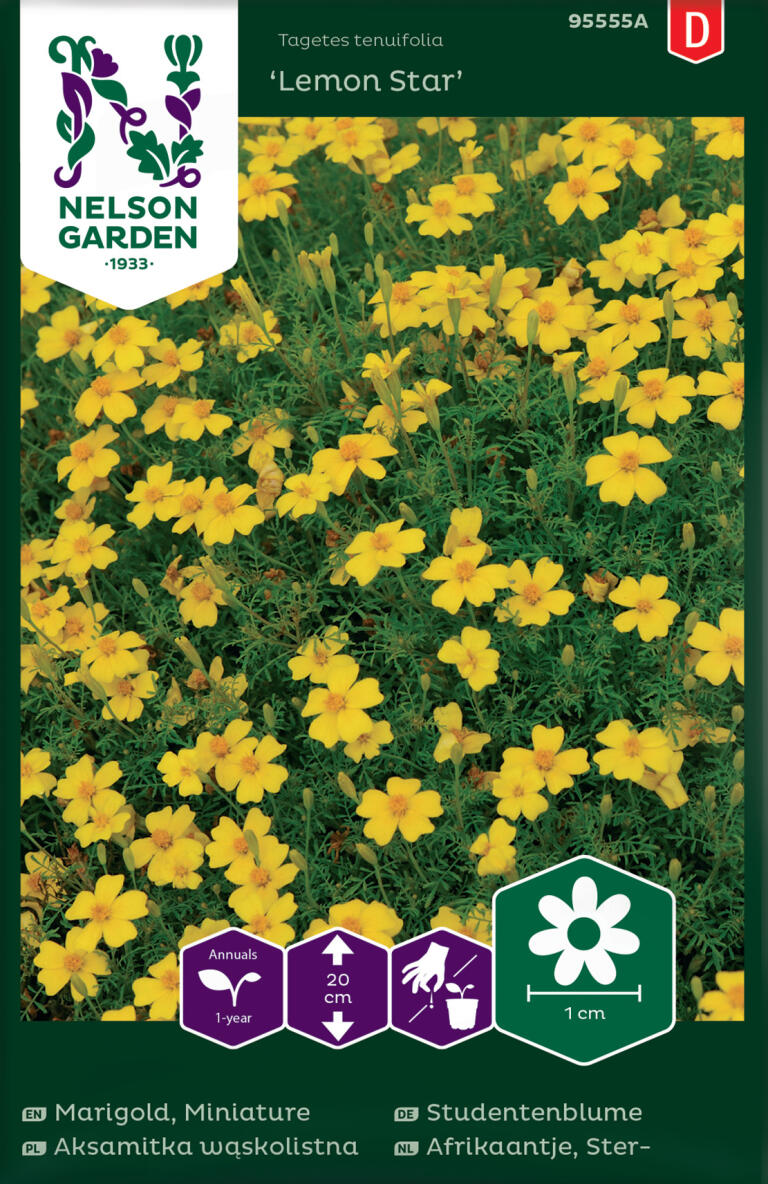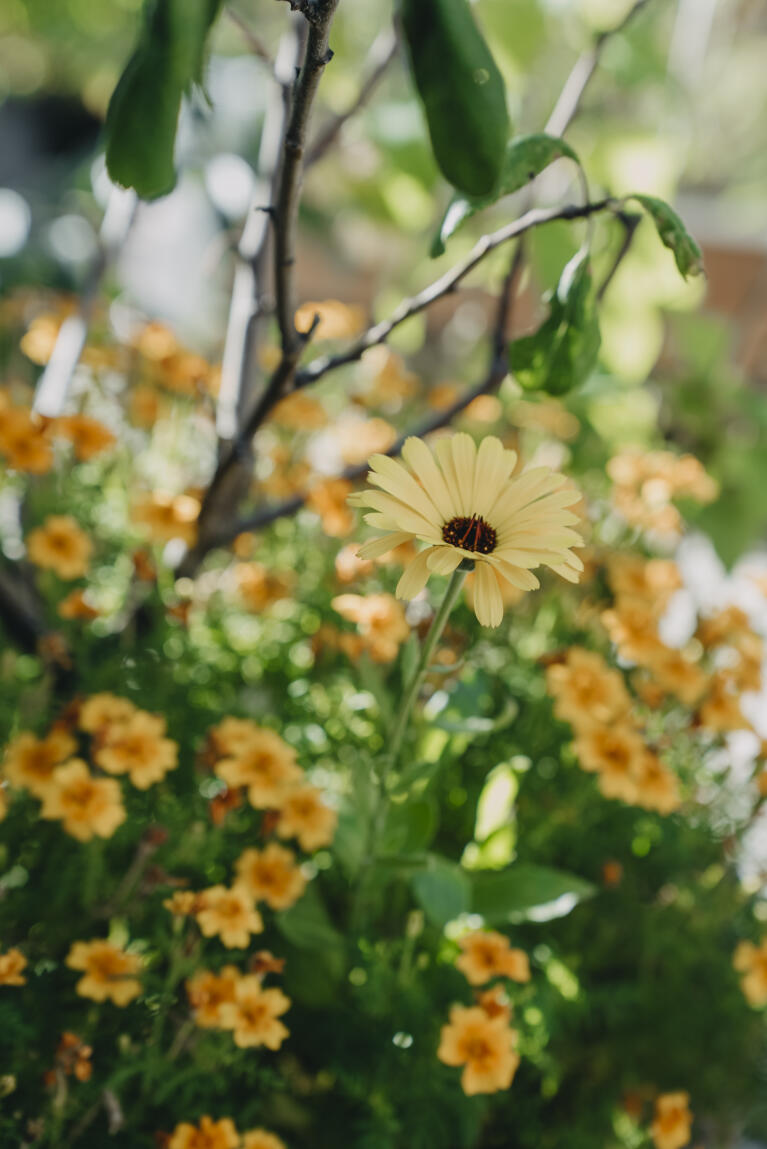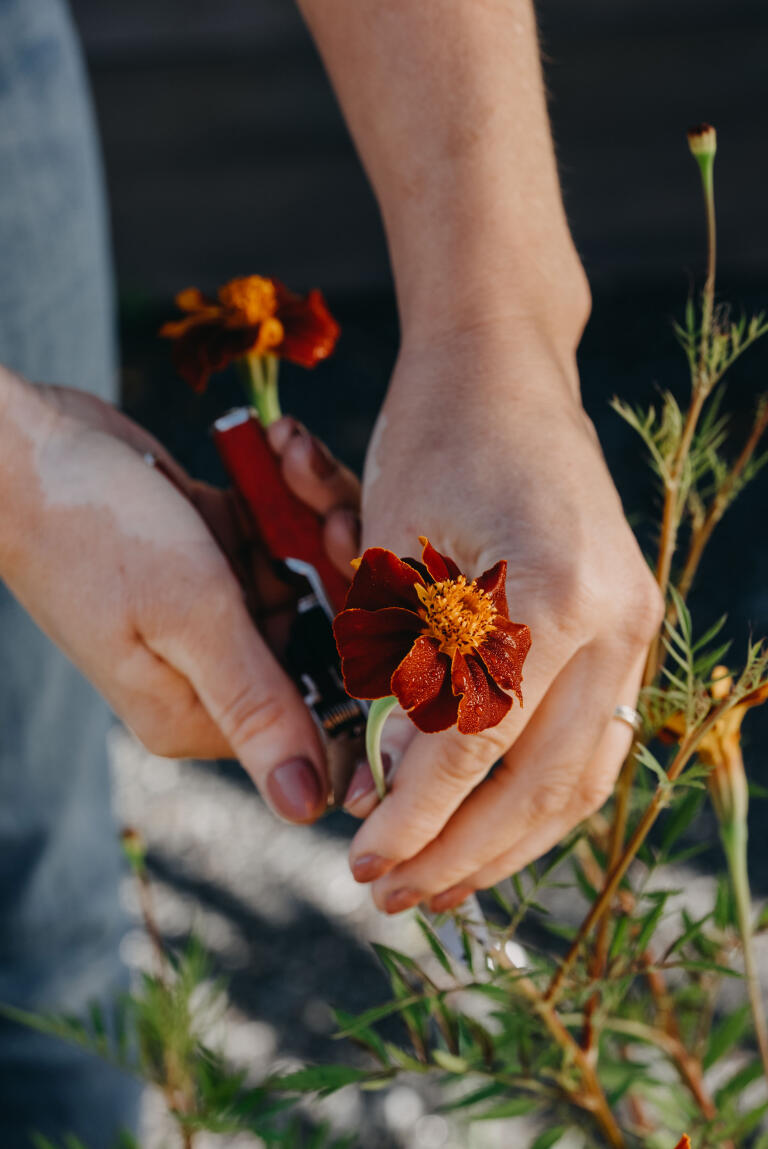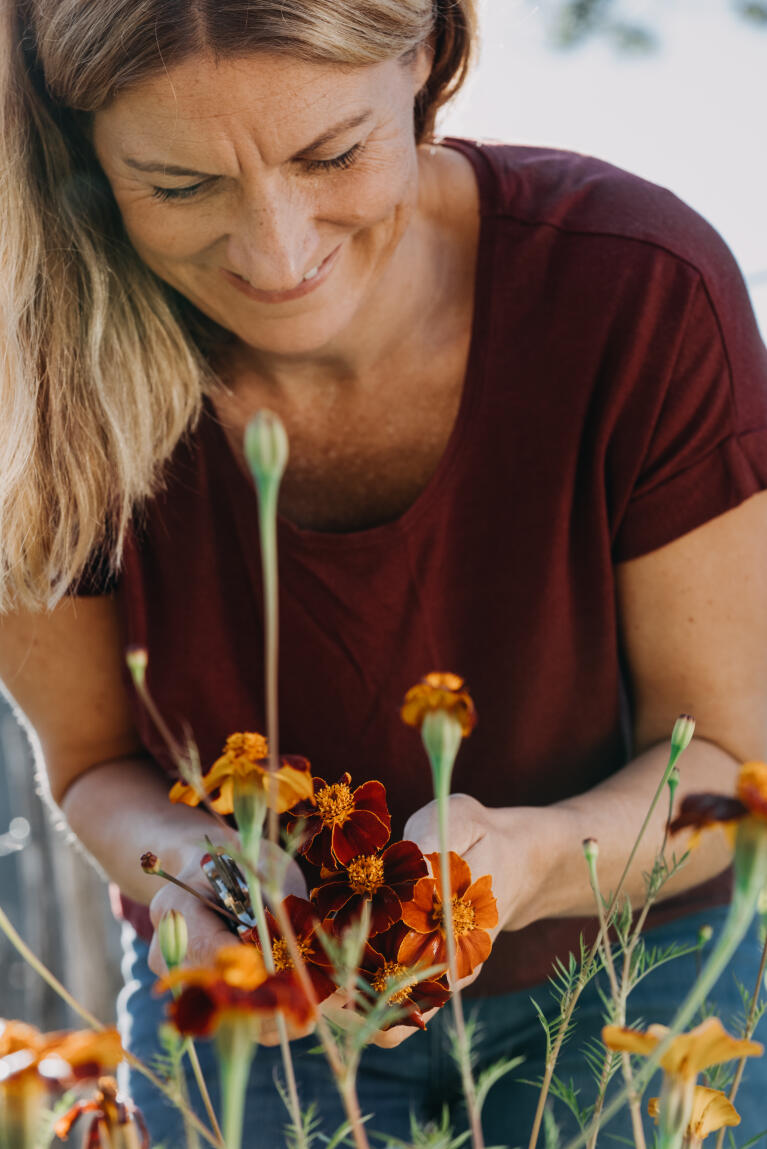Growing marigolds
March 22, 2023It’s hard to think of an easier-to-grow summer flower than a marigold. It flowers readily almost wherever it is planted. However, it is at its most beautiful when placed in a sunny location and grown in well-drained soil.
Marigolds are a rewarding and easy-to-grow plant. During cold and rainy summers, marigolds may be the flowers that hold their own in the flower bed. This annual summer flower also thrives in really sunny locations. Marigolds prefer well-fertilised and well-drained soils but are quite undemanding. You rarely have to worry about your marigolds, they will flower readily all summer.
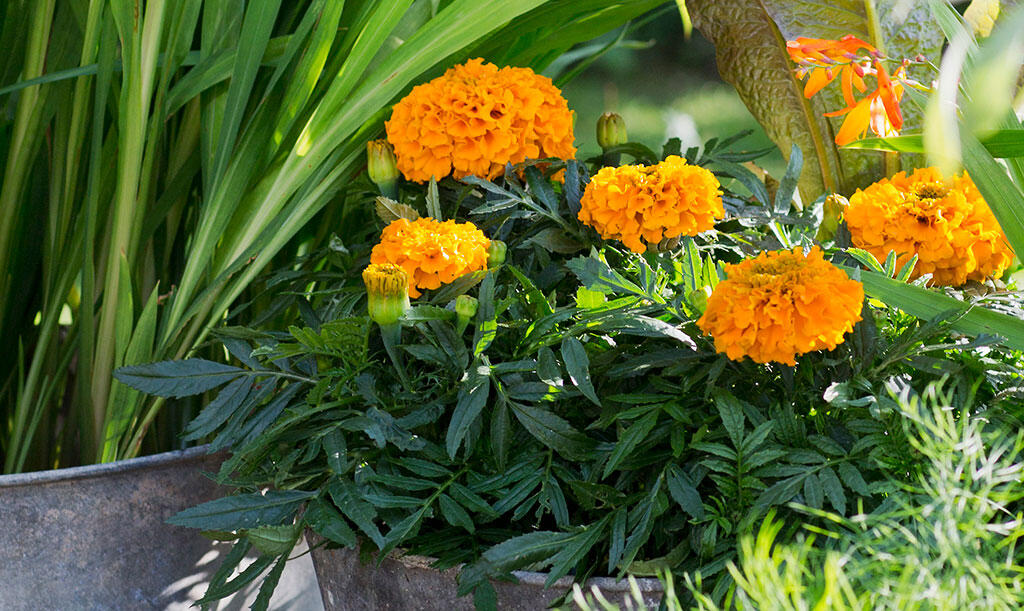 ‘Taishan Orange’ is a robust marigold that looks good in combination with grasses and tall lily plants. Photo: Annika Christensen
‘Taishan Orange’ is a robust marigold that looks good in combination with grasses and tall lily plants. Photo: Annika Christensen
Why grow marigolds?
Some gardeners choose to grow marigolds to discourage pests. In fact, studies indicate that marigolds keep roundworms out of the soil, but whether you will see this in your own garden is unclear. Co-planting different varieties, on the other hand, is almost always good for your soil and what grows in it – not least because it provides a wide smorgasbord for your garden’s useful wildlife.
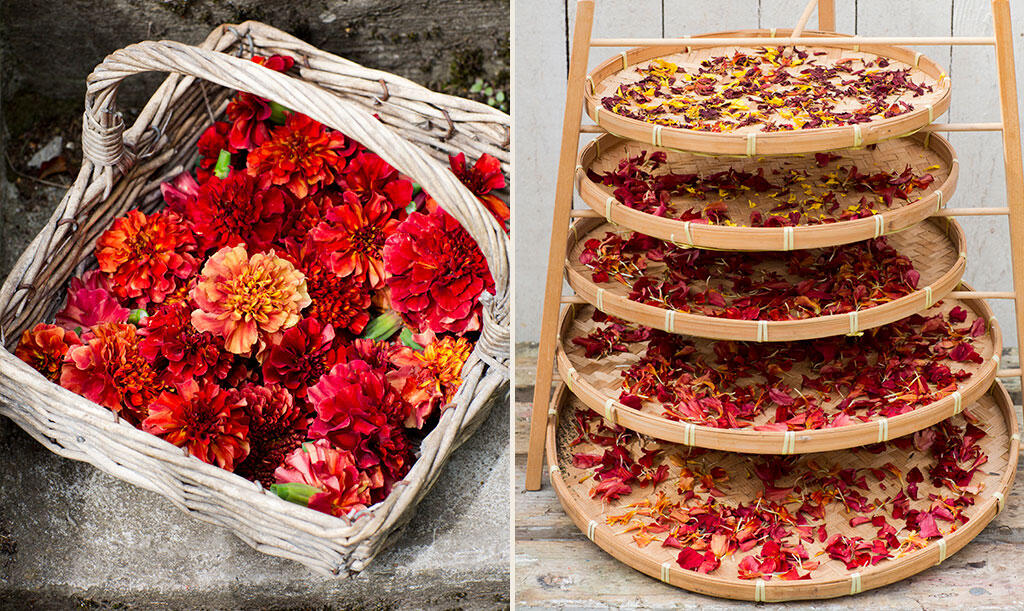 The flowers of ‘Strawberry Blonde’ marigolds are beautiful and taste lovely too. Dry the leaves and use them as a garnish for food. Photo: Annika Christensen
The flowers of ‘Strawberry Blonde’ marigolds are beautiful and taste lovely too. Dry the leaves and use them as a garnish for food. Photo: Annika Christensen
What to do
Seeds from marigolds germinate easily and can be sown outdoors once the soil has warmed up and all danger of frost has passed, but for earlier flowering, it is advisable to start seeds indoors in early April. This will allow you to enjoy the blooms from mid-June until the onset of frost.
Marigold seeds, like other summer flowers, are small (albeit long) and it is sufficient to sow them shallowly in the soil. A thin layer of soil of about half a centimetre is usually enough to cover them. You can also scatter the seeds over the soil and cover the seeds with e.g. vermiculite. Sow quite sparsely – leave a couple of centimetres between each seed. Water and make sure the soil is moist before sowing. Keep the soil moist both before and after the seeds have germinated. You can expect the seeds to germinate within a week or two.
When the marigolds start getting crowded, it’s time to repot them in slightly larger pots. If you used small cultivation trays, plants are usually ready for repotting when each plant is about 5–10 cm. Use plant soil or flower compost in the new, slightly larger pots.
Once the risk of frost has passed, you can plant your marigolds in pots or flower beds. The timing may vary depending on where you want your plants – a pot on the patio tends to be warmer and less windy than in the ground outdoors.
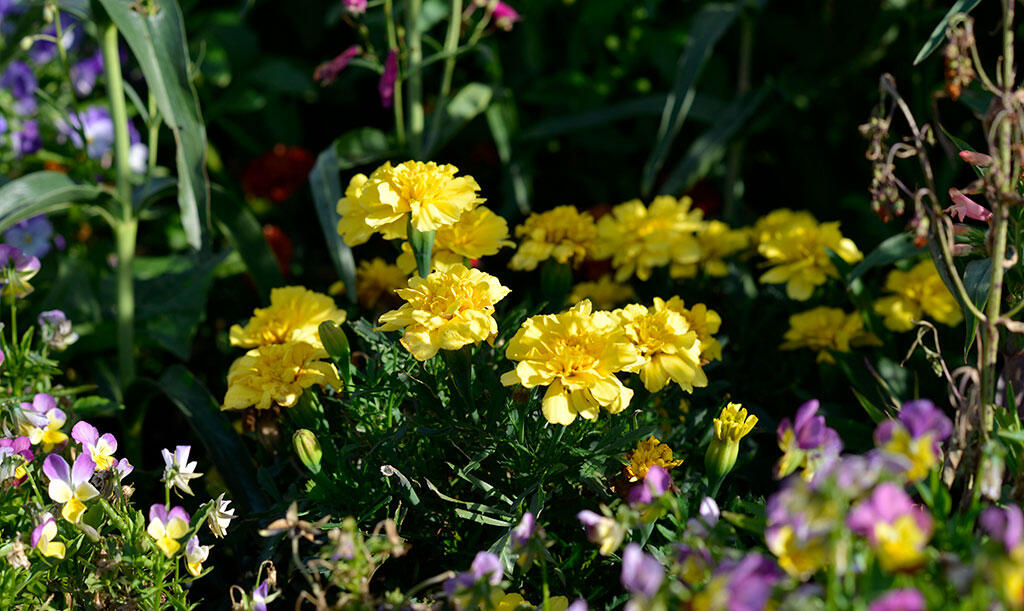 ‘Alumia Vanilla Cream’ is pretty in flower beds. Pick off the wilted flowers and more will come! Photo: Anna Lindeqvist
‘Alumia Vanilla Cream’ is pretty in flower beds. Pick off the wilted flowers and more will come! Photo: Anna Lindeqvist
Pinch back the buds and wilted flowers
Pinch back the first buds to obtain a fuller plant. This will give you more branches for your plant to flower on. Marigolds bloom all summer long, so don’t be afraid to pinch off wilted flowers as they appear so the plants can focus their energy on the newer flowers.
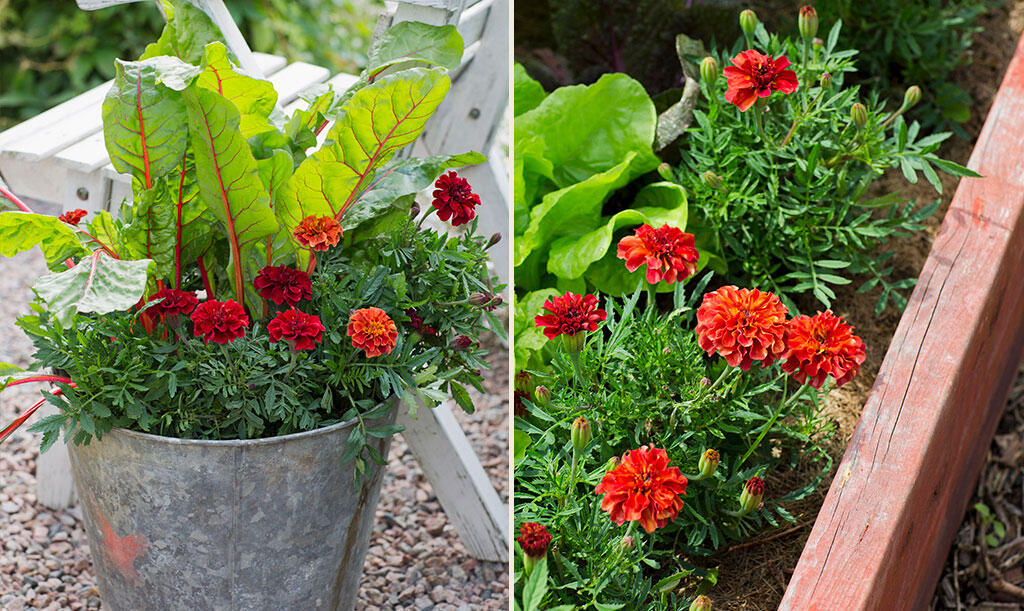 Marigolds can be grown in pots or pallet collars. Pots also make it easier to keep flowers away from slugs. The image shows the ‘Strawberry Blonde’ variety. Photo: Annika Christensen
Marigolds can be grown in pots or pallet collars. Pots also make it easier to keep flowers away from slugs. The image shows the ‘Strawberry Blonde’ variety. Photo: Annika Christensen
Loved by slugs
Lots of gardeners report that marigolds are a slug magnet. Anyone who has problems with Spanish slugs can therefore use marigolds as bait to keep them away from other plants. Unfortunately, this is also a disadvantage for anyone who wants to grow marigolds to enjoy the beautiful flowers!
Marigolds as cut flowers
It is common to see marigolds as border plants in the flower bed or in mixed arrangements in pots, but did you know that there are also tall marigolds that are perfect for bouquets? ‘Burning Embers’ is an heirloom variety that reaches approx. 60–70 cm tall – the bronze-red flowers shine like little buttons in bouquets.
Can marigolds be eaten?
Marigolds can be a beautiful addition to food. You can dry the petals and mix them into your muesli, eat them fresh in salads and desserts, or even add them to your vinaigrette. Lemon marigolds, with their lovely citrus flavour, are usually used for eating. They are both beautiful and edible – the perfect combination.
Tip! Marigolds are perfect for co-planting in the vegetable garden.
Curious about producing your own marigold seeds?
If you are curious about starting to produce your own seeds, marigolds are a good place to start, as the seeds are long and slender and therefore easy to handle. When the seed head looks ripe and dry, you can carefully open it up to see if the seeds are ready to harvest. When the seeds are ready, cut off the seed head. You can choose to separate the seeds then or save the whole seed head to separate later, the important thing is that you keep your seeds dry.
Which variety of marigolds should I choose?
There is a variety of marigolds to choose between, some of the most common types are gem marigolds, double flowered marigolds and African marigolds. In this section, we help you choose the right one from the different varieties.
